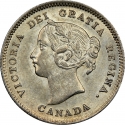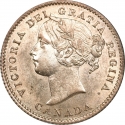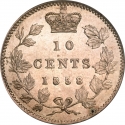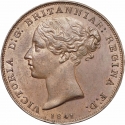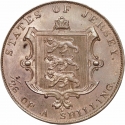You are about to finish your registration. Please check your mailbox (including spam folder). There should be a letter with a confirmation link. Check setting to make sure that your e-mail address is correct.
Send letter againDescription
The British quarter-farthing ( 1⁄16d) coin was a unit of currency equaling one sixteenth of a penny. It was produced for circulation in Ceylon in various years between 1839 and 1853. It is the smallest denomination of pound sterling coin ever minted. The quarter-farthings were never legal tender in the United Kingdom. The coin is considered to be part of British coinage because it has no indication of what country it was minted for, being made in the same style as the contemporary half-farthing which was legal tender in Britain between 1842 and 1869.
Victoria (1819–1901) was Queen of the United Kingdom of Great Britain and Ireland from 20 June 1837 until her death. From 1 May 1876, she adopted the additional title of Empress of India. She inherited the throne at the age of 18, after her father's three elder brothers had all died, leaving no surviving legitimate children. Victoria married her first cousin, Prince Albert of Saxe-Coburg and Gotha, in 1840. Their nine children married into royal and noble families across the continent, tying them together and earning her the sobriquet "the grandmother of Europe". Her reign of 63 years and seven months is known as the Victorian era and was longer than that of any of her predecessors. It was a period of industrial, cultural, political, scientific, and military change within the United Kingdom, and was marked by a great expansion of the British Empire.
Obverse
_Farthing_0.25/1839-1868_09.09.2017_00.17-60.jpg)
|
Left-facing uncrowned portrait of Queen Victoria with ribbons in her hair. The portrait is taken from the dies of the Maundy twopence. VICTORIA D:G: BRITANNIAR: REGINA F:D: |
|---|---|
Reverse
_Farthing_0.25/1839-1868_09.09.2017_00.17_01-60.jpg)
|
The value surmounted by St Edward's Crown. A rose with three leaves (on either side) below. QUARTER |
| Edge |
_Farthing_0.25/1839-1868_09.09.2017_00.17.jpg)
_Farthing_0.25/1839-1868_09.09.2017_00.17_01.jpg)
